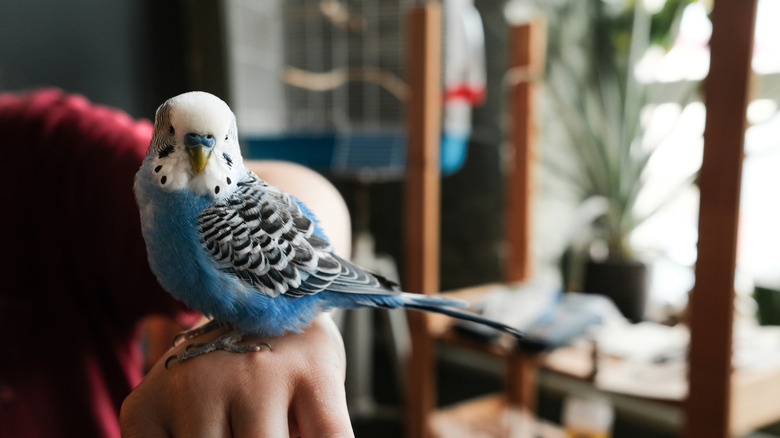Signs That A Budgie Is Gravid
Budgies and parakeets are oviparous, meaning they produce and lay "eggs that develop and hatch outside the maternal body," as defined by Merriam-Webster. Offspring from oviparous animals undergo little or no embryonic development within the mother, so scientifically speaking, birds cannot actually be pregnant, which is defined by Princeton University's WordNet as "carrying developing offspring within the body." However, budgies do become gravid and can exhibit signs that an egg is about to be laid.
Weight Gain
Typically, "there are no physical signs other than a little weight gain (a few grams) to tell you that a budgie is about to lay," according to the Tailfeathers network. With most budgies, you won't notice any signs of gravidity, and there won't be any weight gain or anything else out of the ordinary. Female budgies and parakeets produce and lay eggs when they are ready, and some lay infertile eggs when no male is present.
Appearance
There is really no sure way to know that a budgie is carrying an egg. A budgie that is carrying an egg may or may not look a little rounder in the abdomen, but other situations and issues can cause that. According to Keet Corner at Wavian.com, "You can't tell the female is pregnant—she will not look swollen."
Behavior
Behavior changes may occur, but they will probably be subtle. If your budgie has a nest box, she may spend most of her time in it before she lays an egg. Some birds seem to be constantly cleaning the nesting area, scattering and rearranging nesting material in the box. If you do not supply your bird with a nesting box, she will probably establish a place in the cage like a corner, food bowl or some area on the cage floor, to lay her egg. She may become protective and defend the chosen nesting spot against any disturbance.
As she gets closer to laying an egg, your bird may display behaviors such as compulsively cleaning herself or parts of her cage, or moving around her cage in a repetitive manner. Keet Corner warns that "if you see your budgie straining for a few hours, your parakeet could be suffering from a potentially fatal condition known as egg binding, where the egg will not come out." This is a life-threatening emergency and your bird needs immediate examination and treatment by an avian veterinarian.
Physical Changes
Before laying an egg, your budgie may start molting more and begin to use her feathers as nesting material. As a bird gets closer to laying her egg, there is less room for the bird to pass droppings. You will notice that your bird is going to the bathroom less frequently, and when she does go, droppings may be much larger than usual. "The bigger the poops get, the closer the egg is to the cloacae, where it is due to be expelled," according to the Tailfeathers network. If the droppings are huge for days and your bird seems to be straining, she may be egg bound and must be taken to a veterinarian immediately.
